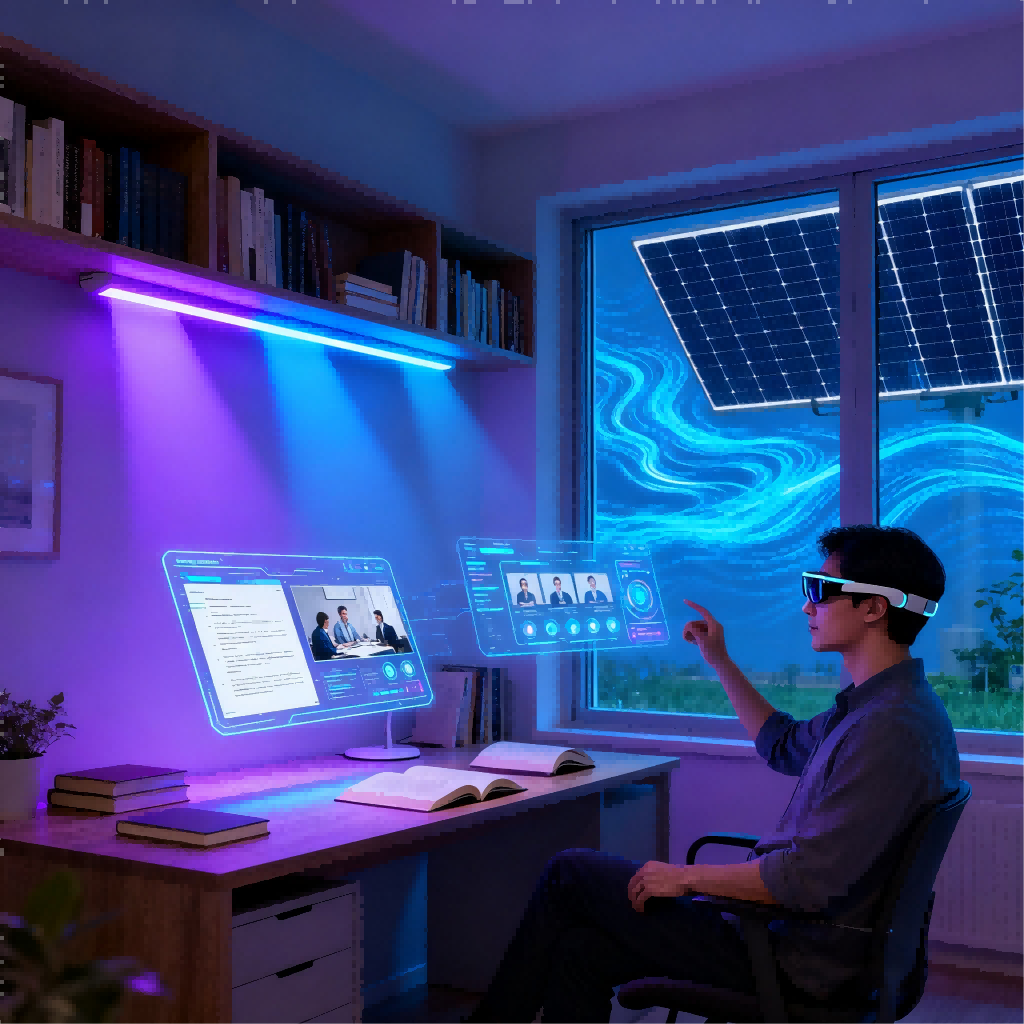From AR-enhanced home decor to gene-level health management, life is being folded into a smarter dimension.
Morning begins as bedroom curtains automatically part, bathing the room in soft light. Your coffee maker activates, filling the air with aroma—it understands your rhythm better than an alarm clock. This isn’t science fiction but a slice of ordinary life in 2025. As AI permeates daily routines like oxygen, the future has quietly arrived.
Spatial Folding Revolutionizes Living Experiences
With lightweight AR glasses, scanning a blank living room wall instantly projects 3D virtual furniture: realistic tactile simulations of sofa fabrics, floating storage data above coffee tables. A “virtual sit-down” triggers force sensors to mimic true support. Home brand EZ Living leveraged this tech to boost user conversion rates by 230%. Decision-making shifts from abstract imagination to immersive experimentation, granting spaces unprecedented adaptability.
Health Management Enters the Gene-Personalized Era
Before breakfast, a smart mirror conducts a 30-second “micro-checkup”: AI analyzes skin hydration, eye redness, and micro-facial expressions, cross-referencing wearable data to generate daily health reports. Recommendations range from vitamin D supplements to adjusting afternoon meeting intensity. One medical AI user noted, “It detected my immune fluctuations before my family did.” Checkups evolve from biannual rituals to seamless daily rituals.
Workspaces Dissolve Virtual-Physical Boundaries
At a holographic conference table, a New York colleague’s 3D avatar modifies a design draft, with real-time synchronization as fingers glide through air. Remote collaboration achieves granular precision down to brushstroke curves, erasing time zone barriers. When lunch break alerts pop up, VR glasses switch to “Forest Meditation Mode,” where pine sounds envelop nerves as EEG monitors adjust sleep-aid frequencies. Work and rest achieve new equilibrium in hybrid reality.
Social Dynamics Reconfigured by Emotional Resonance
Maternity brand BabySphere’s “Human Baby’s Puzzling Behaviors Challenge” sparked 120,000 interactions from user-generated parenting content, converting 63% of participants into private community members. Emotional insights now grace product packaging, with memes circulating organically in communities—content transforms from passive consumption to social currency activating connections.
Nightfall: Home as a Sentient Organism
The foyer activates “homecoming mode” as dusk falls. The refrigerator recommends dinner recipes based on body fat data, syncing with community farms for organic ingredient delivery. Shower temperature adjusts to morning stress levels, while pillows’ embedded sensors dynamically support cervical spines. “It remembers the ginger tea concentration I craved during my last cold,” marveled a smart home user. Technology fades into the background, making home a warm, adaptive entity.
The essence of future living isn’t about flashy tech stacks. When AR turns imagination into tactile reality, when health management drills down to genetic fluctuations, and when social bonds rebuild through emotional resonance—technology ultimately delivers more efficient, free, and humane life experiences. We stand at the threshold of human-machine symbiosis, where every technological pulse redefines the texture of “existence.”
